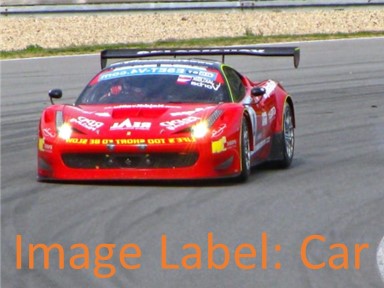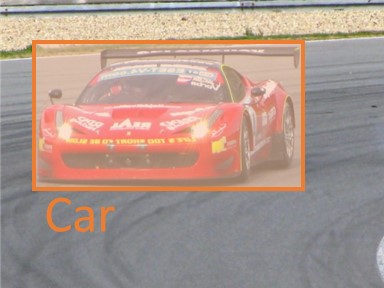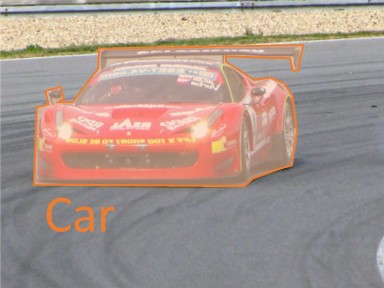Annotating Data
Annotating data is the process of associating metadata with data. Any datum might have many different annotations, but each type of learning task will require a specific type of annotation to train properly. The following are common Chariot-supported annotation types for images, along with relevant examples.
Image Classification
Image classification models are designed to recognize specific categories of objects from an image, with each object receiving one label. Image classification tasks allow a model to learn that an image contains a specific noted item. For example, Figure 1 below shows an example annotation, noting that the image contains a car.
Curating a dataset for classification entails an annotator or DS providing a label for each image in the dataset.
Figure 1: Classification label for a car
Object Detection
Object detection models are designed to recognize the existence of an object within the space of an image. An object detection task allows a model to learn both that the image contains a specific noted item and where in that image the item is located. Object detection tasks require two annotations: a bounding box (e.g., the lower-left and upper-right corners of a region) and a label for the object in the bounding box. For example, Figure 2 shows the same image as Figure 1 but with an object detection annotation, noting that the image contains a car and where in that image that car is located.
Be aware that any pixels not inside a bounding box are considered background for an object detection model.
Figure 2: Object detection annotation for a car
Image Segmentation
Image segmentation models are designed to recognize the boundaries of objects in an image. Annotations for segmentation are similar to those for object detection but are more flexible than a simple box, supporting segmentation annotations that are polygons (collections of straight lines) and allow for a label for each segmented region. This means that image segmentation tasks can allow for detailed image segmentation and labeling, categorizing images by cleaner borders that do not overlap. For example, Figure 3 shows the same image as Figure 1 but with segmentation annotations.
Chariot generates dense labels (label masks) using the polygonal regions as references rather than storing dense masks.
Figure 3: Image segmentation annotation for a car


